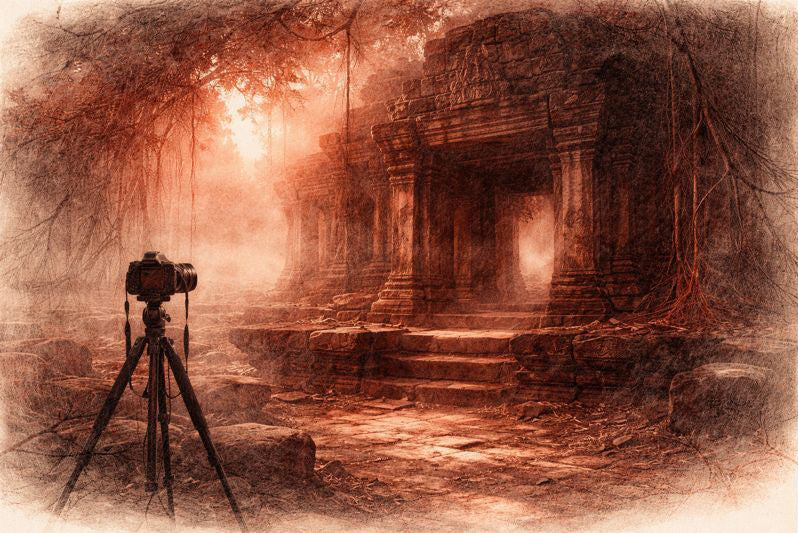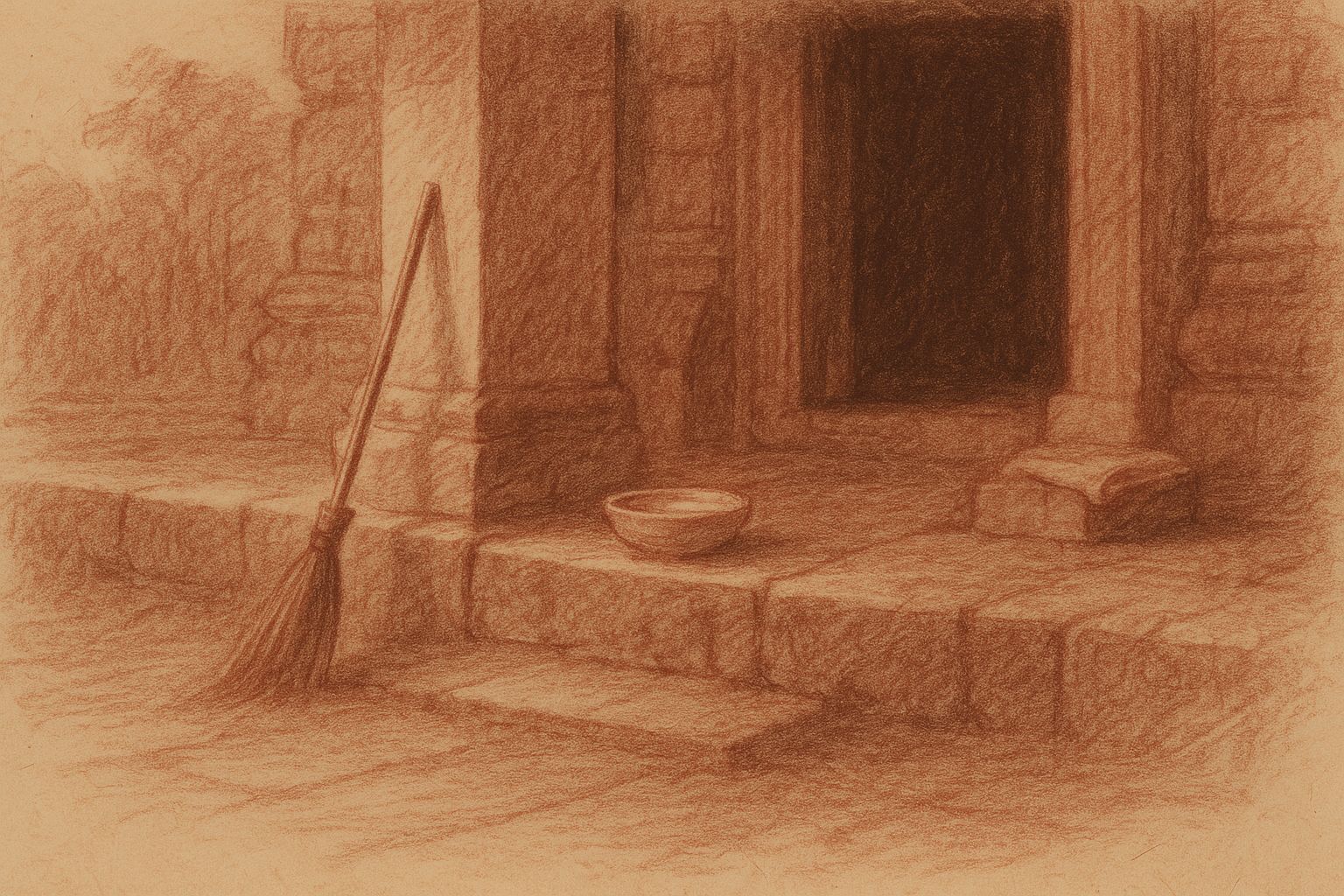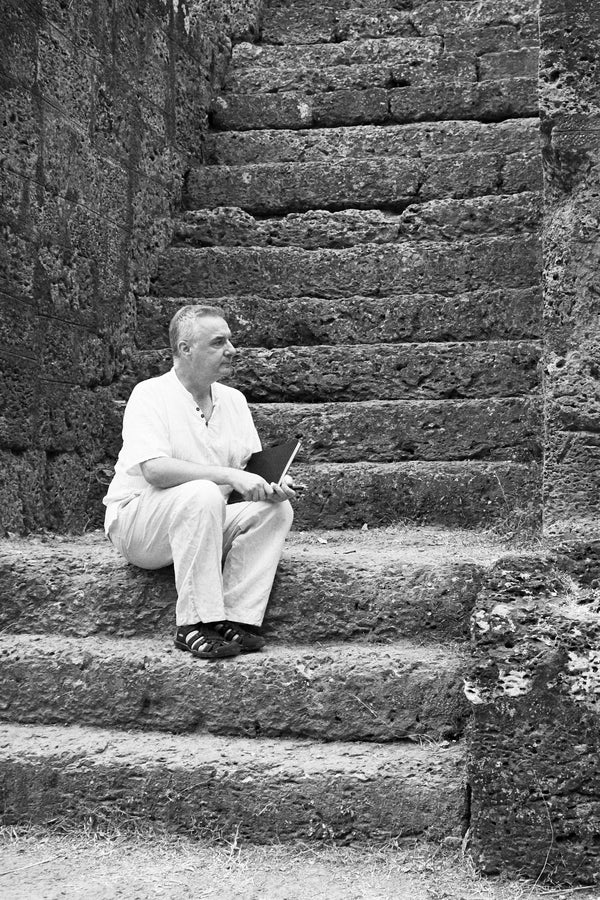Complimentary worldwide shipping on orders over $400 · No import tariffs for most countries
Complimentary worldwide shipping on orders over $400 · No import tariffs for most countries

Vishnu, the Lord of Cambodia
4 min read
Vishnu is the supreme god of Vaishnava belief, the saviour, the ‘messiah’, the one who condenses in himself the Trimurti of which Shiva and Brahma are only aspects. He is the one who pervades (Bhagavat), creates (Prajapati) and preserves (Hari).
As a creator, Vishnu is often put in antagonism with Shiva, the destroyer. Vishnu is the manifestation of solar energy, enveloping everything with his rays, striding through the universe in three steps. When associated with the water of the Primordial Ocean, he is called ‘Narayana’ and represented in human form sleeping on the great naga Ananta or Shesa.
In his bhakti doctrine resides divine love and mystical union. Because of his concern to liberate the world from all hardship, to protect and re-establish the dharma, he appears regularly on earth as an avatara. In fact, the name avatara simply means ‘descent’ rather than the commonly used ‘incarnation’. Because of this, amongst all Hindu gods, Vishnu is the most available to satisfy human requests.
Vishnuism, or Vaishnavism, was known in Cambodia from the 1st century CE. Although in pre-Angkorean iconography he usually has eight arms, in Angkorean reliefs he mostly appears with four arms, with the usual attributes except that the lotus of Indian iconography is replaced with a small sphere representing the Earth.
The inscription of Thvar Kdei compares Vishnu's arms to the guardians of the cardinal space (lokapala), so that when there are eight arms, four are the main cardinal points and the other are four intermediaries. This concept is in agreement with that of the Vishnudharmottara, the fundamental Vaishnava canon.
In this article, we focus on the Vishnu depicted as a supreme god with eight arms, expressing his universal power. In Khmer iconography, he seems to appear with eight arms when he goes to war to annihilate or dominate his enemies, thus assuming a political meaning.
Vishnu Kambujendra – the Lord of Cambodia
In the large sculptures of Vishnu with eight arms at the great Vaishnava temple of Angkor Wat, installed by Jayavarman VII, we see Vishnu Kambujendra, or Kambujeshvara, the Lord of Cambodia. Figures 1 and 2 show the most famous of these, revered by the Khmer and known locally as Ta Reach, the King of the Ancestors.
In Figure 4, below, we see the dynamic representation of Vishnu with eight arms, carved on the northern pediment of the northern library of the second level courtyard at Angkor Wat Temple. Here, Vishnu is shown violently throwing to the ground, or killing, a series of scantily-dressed enemies, whose hair is pulled back into a chignon, features that for the Khmers of that period meant foreign, or possibly tribal people. The scene depicted, rather than relating to a specific fight of Vishnu or Krishna against any asuras, seems more likely to be a political statement, with the relief symbolising the Khmer king subjugating neighbouring countries or rebellious Khmer rulers.

Figure 3. Vishnu Kambujendra, Angkor Wat, Cambodia. 2023
Vishnu Trailokyanatha
The eight-armed Vishnu Trailokyanatha, the Protector of the Three Worlds, is depicted in a particularly interesting large carving in the central sanctuary of Kravan Temple, on the central (western) brick wall (see Figure 4).
In Figure 4, we see the god holding in his lower left hand a small water pot (kamandalu), in his two middle left hands a kind of short stick, or danda, and in his uppermost left hand a small conch (chanka), now eroded. In his lower right hand he holds a small stick, while the upper three carry a short stick similar to that seen in his left hands.
Except for the small conch, Vishnu’s usual attributes, the disc (chakra), the mace (gada) and the lotus (padma), are missing. He does not have jewellery apart for the crown/mukuta and earrings. His sampot is simple with a long fishtail in front.
The figure of Vishnu is surrounded by a thin niche that has a large reptile/crocodile in its upper part, and below a row of figures including (from the left) a large asura, six standing men, and a crowned couple. At the side of the god there are six rows of larger standing figures in anjali, mainly men, and a couple with a human body and the head of a horse.
The meaning of the large crocodile above Vishnu is puzzling. Although in Cambodia the crocodile is often associated with Shiva Bikshatanamurti, in classical mythology it is the symbol of Kama (love), associated with Pradyumna. The latter is, according to the Pancaratra doctrine, the third element in the chain of evolution that leads to the manifestation of the material cosmos. The other carvings in this room, to either side of Vishnu Trailokyanatha, depicting the Trivikrama and Garudavahana aspects of Vishnu, would then represent Space and Light, two essential elements in the creation of a material universe.
We will discuss the other forms of Vishnu and his avatara, as represented in Khmer iconography throughout Angkor, in other articles in this series.
If you enjoyed this article, and you would like to continue to share in my adventures, please sign up for my newsletter below. Since I no longer post on social media, this is the best way to stay up-to-date with my work.
Also in Library

Before the Shutter Falls
3 min read
Before the shutter falls, fear sharpens and doubt measures the cost of waiting. In the quiet hours before dawn, the act of not-yet-beginning becomes a discipline of attention. This essay reflects on patience, restraint, and the quiet mercy that arrives when outcome loosens its hold.

Those Who Keep the Way Open — On the Quiet Guardians of Angkor’s Thresholds
3 min read
Quiet gestures shape the way into Angkor — a swept stone, a refilled bowl, a hand steadying a guardian lion. This essay reflects on the unseen custodians whose daily care keeps the thresholds open, revealing how sacredness endures not through stone alone, but through those who tend its meaning.

Multiplicity and Mercy — The Face Towers of Jayavarman VII
5 min read
A new vision of kingship rises at the Bayon: serene faces turned to every horizon, shaping a world where authority is expressed as care. Moving through the terraces, one enters a field of steady, compassionate presence — a landscape where stone, light, and time teach through quiet attention.
Join My Studio Journal
Receive occasional letters from my studio in Siem Reap—offering a glimpse into my creative process, early access to new fine art prints, field notes from the temples of Angkor, exhibition announcements, and reflections on beauty, impermanence, and the spirit of place.
No noise. No clutter. Just quiet inspiration, delivered gently.
Subscribe and stay connected to the unfolding story.

Join My Studio Journal
Receive occasional letters from my studio in Siem Reap—offering a glimpse into my creative process, early access to new fine art prints, field notes from the temples of Angkor, exhibition announcements, and reflections on beauty, impermanence, and the spirit of place.
No noise. No clutter. Just quiet inspiration, delivered gently.
Subscribe and stay connected to the unfolding story.



